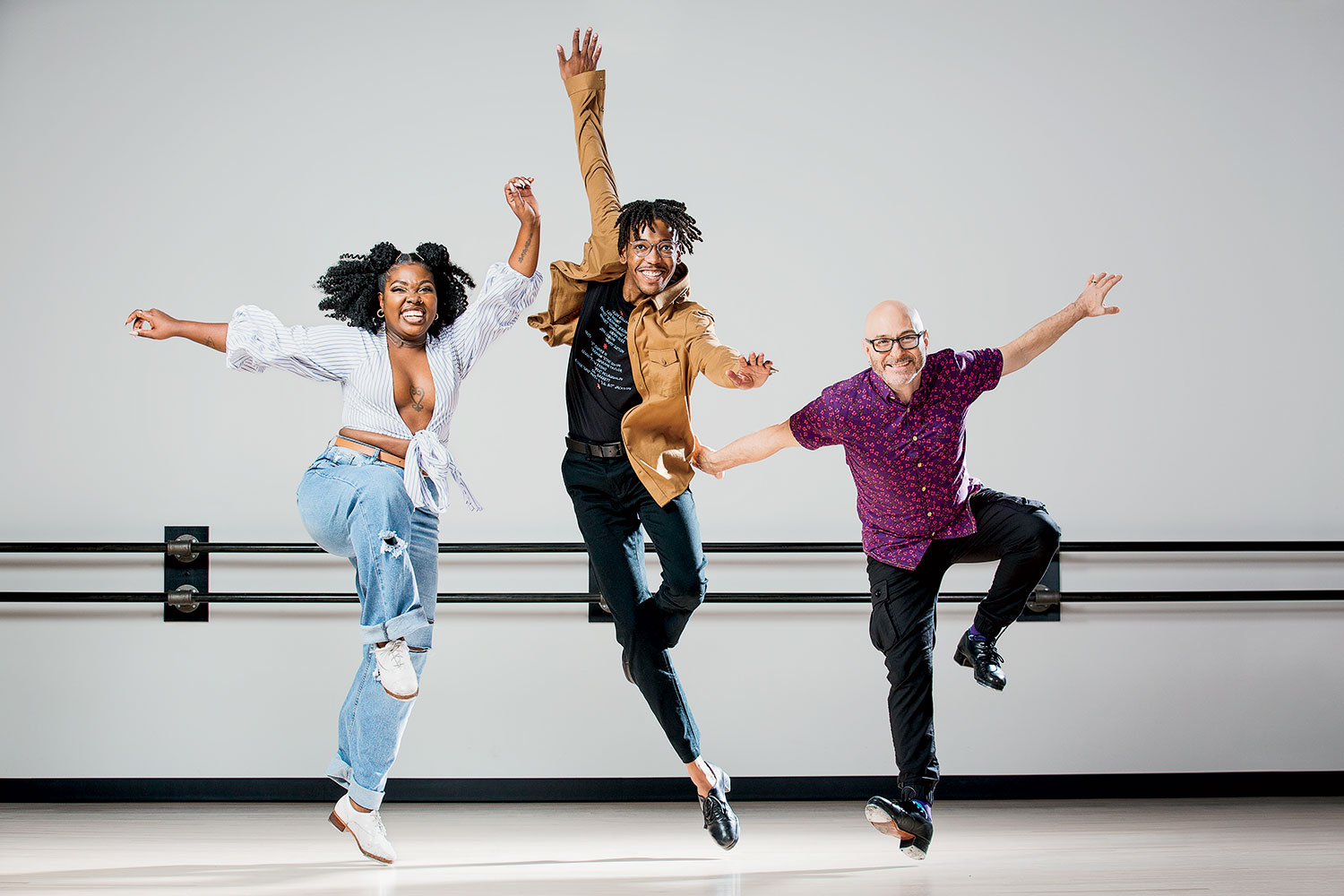You know of Gene Kelly and Gregory Hines. Maybe Bill “Bojangles” Robinson and the Nicholas Brothers ring a bell? Savion Glover might be on your radar. What about Star Dixon, Mark Yonally, and Sterling Harris? In Chicago, masters like Robinson, Hines, and Glover are just part of the story of American tap dance.
Tap dance’s roots stem from rhythms carried by enslaved Africans to the Americas. Denied drums and other instruments, they used their feet and hands to make music. What we recognize as tap dance today came about in the mid-1800s via minstrel shows. The vaudeville circuit and the Great Migration created hotbeds for tap dance in America’s northern cities, including Chicago.
And in tap dance circles, Chicago sets the bar. Still, the Windy City often goes unrecognized in the annals of dance history.
“To this day, when you read books about tap, it’s almost like it existed in New York and Hollywood, and nowhere in between,” says Chicago tap dancer Bril Barrett. “It was an unspoken thing that we were fighting for recognition and relevance.”
Barrett founded M.A.D.D. Rhythms with Martin “Tre” Dumas III 20 years ago. Before that, the West Side native toured with Riverdance. He also performed in Tap Dance Kid and Imagine Tap!, a musical revue created by Derick K. Grant of Bring in ’da Noise, Bring in ’da Funk.
But Barrett isn’t focused on Broadway. It’s more likely you’ll find him teaching tap at a community center or hosting monthly tap jams at the Harold Washington Cultural Center. Dixon, Barrett’s sister, was an original member of M.A.D.D. Rhythms. Today, she is the company’s assistant director and has made a name for herself as a dynamic performer.
Chicago is known for rhythm tap, an extension of jazz that puts musical improvisation at the forefront. Artists like Harris and Jumaane Taylor are as comfortable on the stage as in jazz clubs. Taylor, also a founding member of M.A.D.D. Rhythms, recently directed the 30th anniversary edition of Chicago Human Rhythm Project’s Rhythm World, the oldest tap festival in the country. He created a piece to John Coltrane’s A Love Supreme and has one in the works set to a blend of Ornette Coleman’s The Shape of Jazz to Come and Igor Stravinsky’s The Rite of Spring. Artists like Nico Rubio and Donnetta “LilBit” Jackson similarly fuse tap with genres like hip-hop and footwork.
In other words, you won’t find these cats in top hats and tails, even as Chicago tap has gained popularity in the concert dance world. Yonally started Chicago Tap Theatre 19 years ago and regularly experiments with narrative themes and theatrics you might find at a ballet. In February, CTT returns to its roots, performing a revival of tap legend Brenda Bufalino’s Flying Turtles at the Athenaeum Theatre alongside new pieces by Harris and Molly Smith — all set to a live jazz band.



